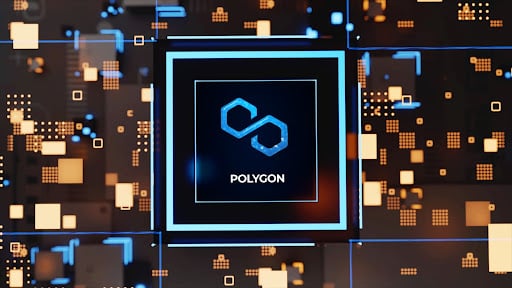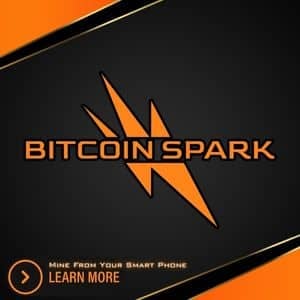Polygon MATIC cryptocurrency coin logo and symbol on digital technology background illustration.
- Tokenization Takes Center Stage: Institutions across the globe are turning to tokenization, with Polygon emerging as a significant player in digitizing a myriad of assets, from financial instruments to collectibles like Pokémon cards.
- Polygon’s Protocol in Focus: Polygon 2.0, with its web of interconnected Layer 2 chains on Ethereum and a shared zero-knowledge (ZK) bridge, envisions a world where institutional tokenization not only thrives but scales to meet the needs of traditional finance.
The Advent of Tokenization: Navigating through Polygon’s Protocols
A forward-leap into the future of finance, tokenization, is seemingly crossing its tipping point. Institutions are buoyantly riding the wave, with global anticipations soaring high – a report by Citi forecasts $4 trillion of tokenized securities by 2030, whereas Boston Consulting Group paints an even more astronomical picture with a potential $16 trillion of illiquid assets being tokenized.
Given the magnitude and the potential it presents, tokenization is much more than a mere financial buzzword. It is about to re-engineer the very essence of asset management, trading, and investment across various platforms, notably Polygon.
Tokenization isn’t just the future; it’s happening now on Polygon! From institutional assets to Pokemon cards, it’s reshaping the financial landscape, unlocking $4,000,000,000,000 in value. Don’t miss out on this wave of innovation. 🚀 #Polygon #MATIChttps://t.co/sWkNyyHC8o pic.twitter.com/v0rPy04zZS
— Collin Brown (@CollinBrownXRP) October 12, 2023
Tokenization, at its core, denotes minting a digital avatar of an asset on a blockchain, unraveling a slew of value propositions for financial markets, including heightened capital efficiency, lowered intermediary costs, access to novel distribution channels, expanded asset exposure, and constant access to liquidity. In a landscape where practically any tangible or intangible item holds value and can be traded, tokenization extends its tendrils into sectors beyond traditional finance.
Bringing Collectibles into the Financial Play
In an era that bore witness to a revived allure towards collectibles like Pokémon cards, tokenization finds its relevancy not just confined to stocks or bonds but penetrating into realms where ownership and tradeability of assets are pivotal. Digitizing Pokémon cards, government bonds, or any asset brings forth a mechanism that enables a trustless way to procure or trade assets, spawning possibilities for DeFi primitives, and generating new streams of liquidity and accessibility.
Moreover, tokenization is actively unfurling on the Polygon protocols, suggesting a pragmatic question: Is the fundamental infrastructure mature enough to seamlessly facilitate these ambitious aspirations?
Unveiling Polygon 2.0: Architecting a Scalable Financial Future
Here, Polygon 2.0 emanates as a monumental figure, conceptualizing a network of intertwined Layer 2 chains on Ethereum, bound by a shared ZK bridge and an interoperable environment that guarantees access to a unified liquidity potent enough to fuel institutional tokenization.
A myriad of major players are already crafting tokenized programs on the Polygon protocols. Franklin Templeton, a global investment magnate, for instance, has inaugurated its tokenized money market fund on Polygon PoS, bestowing investors with access to previously unattainable, prestigious investment strategies and ensuring liquidity at the internet speed.
Similarly, entities like Hamilton Lane, Mirae Asset Securities, and Siemens have dabbled into the tokenization world, tapping into the efficiencies of blockchain infrastructures and democratizing access to assets for a wider investor spectrum. On the same vein, the Dutch bank ABN AMRO has marked its footprint by issuing a €5M digital green bond offering as an ERC-3643 token through Tokeny, another platform employing Polygon PoS to enable financial institutions to issue and manage securities.
Navigating through Challenges and Expectations
While tokenization brings forth an innovative financial canvas, it’s pivotal to parallelly navigate through regulatory landscapes, align technologies with traditional financial benchmarks, and ensure that the digitalization of assets doesn’t compromise on security or accessibility. Institutions are diligently working towards creating this equilibrium, fostering an environment where digital assets can be traded, managed, and invested in, with equal prowess as their physical counterparts.
As Polygon 2.0 looks ahead, it envisions an integrated ecosystem of ZK-powered L2 chains that will ease interoperability and cross-chain transactions, spearheading a unified ecosystem that enables tokenized projects to plunge into deeper liquidity and ensuring that the technological framework doesn’t merely support but propels the tokenization drive into the future, sans constraints.
Polygon, with its robust protocols and innovative approach towards a tokenized future, undeniably stands at the cusp of a financial revolution, weaving a narrative where technology, accessibility, and financial prowess coalesce to shape the future of asset management and trading.
Best Crypto Exchange for Everyone
- Invest in Polygon and over 200+ cryptocurrencies on America’s most trusted crypto exchange.
- Buy Polygon easily and with low fees via PayPal and credit card.
- Enjoy super-low trading fees and access to more than 400 trading pairs.
- Coinbase is regulated by the SEC and FINRA in the USA, and by CySEC and FCA in Europe.

 100,000,000 Users
100,000,000 Users
Crypto News Flash does not endorse and is not responsible for or liable for any content, accuracy, quality, advertising, products, or other materials on this page. Readers should do their own research before taking any actions related to cryptocurrencies. Crypto News Flash is not responsible, directly or indirectly, for any damage or loss caused or alleged to be caused by or in connection with the use of or reliance on any content, goods, or services mentioned.
Credit: Source link












































































































































